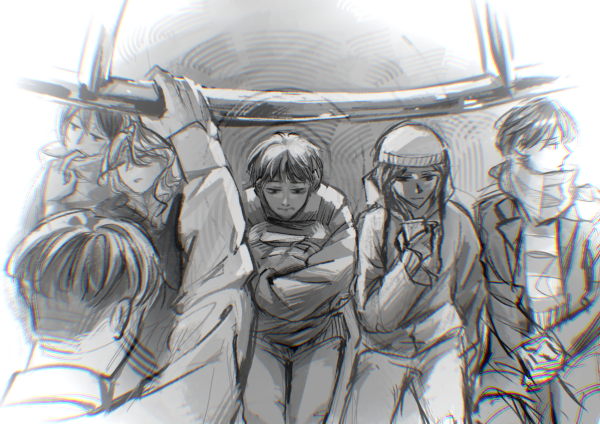Understanding the Masters beat scene
Sitting in the library, one is exposed to a plethora of unique sounds. The sound of laughter, chatter, page-turning, and often, the musical ramblings of many a Masters beat-maker, mixing tracks on GarageBand.
When discussing beats, often one refers to the tracks underlying rap or hip-hop songs, electronic harmonies that can be easily crafted using a computer, and a little imagination. It’s the accessibility of this art which brought such high appeal in the Masters community.
One such artist, Leo Horton ‘24, better known as Mecca Beats, noticed as his peers engaged in music production in various capacities. He joined forces with Sam Tannenbaum ‘24, known musically as Nassar, to form what is now known as Battle of the Beats. The club was created with the intent of building a creative space for those interested in making beats to work and collaborate.
“This is, like, our one-year anniversary since we started the club,” Tannenbaum said during their weekly meeting, on Feb. 7, 2023. “When me and Leo started this club, it was basically just me and Leo in a basement, by ourselves, trying to change the world.”
The group laughed at the apparent corniness of Tannenbaum’s statement, but the sentiment revealed a level of sincerity attached to beat-making often lost in the process of publishing it.
The process of getting beats from a software out into the musical world is not an easy one. High school producers, with no platform to support them, often do the work of reaching out to music creators themselves, asking lesser-established rappers to put words over their tracks via Instagram DM.
Horton, detailing the process of publishing a beat, explains, “So obviously you start off by making a beat. And once you have enough, you can probably find specific artists on Instagram, or through these people called A&Rs, which essentially just send beats to artists and help mix the songs. So either you can send your beat to an A&R and he or she can send it to whatever artist they want to send it to, or you can directly hit up the artist on Instagram.”
Scrolling through his phone, Horton revealed scores of Instagram DMs reaching out to various artists. Each message thread began with only a few words, sent by him: “Can I send beats?” (or in Spanish, ¿puedo enviar beats?).
In the Battle of the Beats room itself, club members were each just beginning this journey, producing individual beats around a conference table, and sharing their work for feedback.
Of the club’s mission, Battle of the Beats advisor, Gilles Pugatch, said, “The vision for the club was to bring together the many, many students on campus that are devoted to the art form by building a community of beat makers. The best part about clubs in general is the opportunity for students to build relationships with their peers outside of the classroom, and this club does that in spades.”
But since its inception, the club’s horizons have broadened beyond the Masters campus. Group members, realizing the unique significance that creating beats had taken on in their own lives, hoped to expand the audience which could be enriched by music production.
“We’re working with the JCCA right now, which is a nonprofit that looks out for underprivileged kids. We’re going to start going to their campus and teach kids how to make beats, and we’re going to install all this stuff on the computers there. So, like, expanding who gets the access to beats, because obviously not everyone gets access to beats. And we’re very lucky for that,” Horton explained.
Beat-making is an accessible art form which does not require the rigorous study of sheet music, or hours of daily practice and fine-tuning, to get the hang of. But why is it so important to so many individuals in the Masters community?
Ehimare Ehikioya, member of Battle of the Beats, said it best: “I just like making things that sound good, you know? It makes me really happy.”

Twelfth-grader Alexa Murphy, lead news editor of Tower, first came to Masters in ninth grade. She said she joined the introductory journalism class her...











